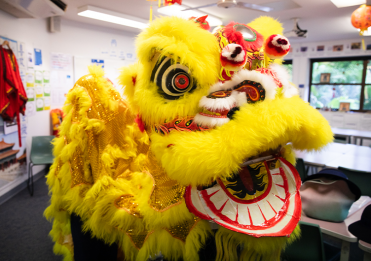On a marble tablet in a church in country NSW:
Cpl James Phillip Henderson
Only son of Robert and Caroline Henderson
Killed in action at Ypres 16 March 1916
Aged 22 years
‘He, being dead, yet speaketh’
On a plaque at Brisbane Girls Gammar School:
This Garden
Was established by the Fathers Group
As a memorial to those staff and students
Who lost their lives in an accident at Christmas Creek
On 21 April, 1979
Helen Gahan, Jillian Skaines, John Stamford, Janelle Stamford (Nee Wherry)
We give thanks for the courage and selflessness shown by all those who survived.
On a tombstone in Toowong Cemetery, the words from St John’s Gospel:
I am the resurrection and the life, says the Lord. They who believe in me, though they were dead, yet shall they live and they who live and believe in me shall never die.
And I’m sure we’ve all passed by hundreds of memorials like this, often with barely a glance let alone a thought as to what they represent. Young lives cut short, their potential unrealised. The intense and ongoing grief, loss and despair of those who loved them and continue a bittersweet remembrance.
But today, in this month of April, as a school, we once again stop and in silence focus and remember. We anticipate the solemn celebration of ANZAC Day tomorrow. We think about what happened at Christmas Creek 40 years ago last Saturday.
And as we remember, we both enter into the events of the past and we also make them present. Because that is what remembrance means. As human beings we have the unique ability to be aware of both past and future as well as the present, and also of how the past and the future impact on that present. It is true the past is never dead to those who would know how the present came to be: and the dead are never dead, as long as they inhabit the memory of the living, as who and what they were somehow become part of us.
And contemporary technology aids and reinforces this process and sense of connecting and human connectedness. The television programs making stories out of the old sepia photographs and yellowing film footage. Young faces in uniform, looking out at us. Faces we could have known. And so the story is told and retold. And somehow Gallipoli and the Burma Railway are no longer just pointless horror and meaningless disaster but become part of our personal and community meaning. Ordinary people caught up in extraordinary circumstances and somehow transcending themselves. In the midst of the pity of war, the pity war distilled, the loyalty, the mateship, the self-sacrifice smothering fear and self doubt—what the Australian war poet John Manifold called the courage chemically pure. Somehow becoming what they otherwise might never have been—the stuff of myth and legend, encapsulating what at best we are, as human beings and as a nation.
It is this individual human quality which makes the dead facts of history live: not the self-serving official war histories by which generals and politicians try to explain and justify and excuse what they did not only to others but to their own.
Always remember, never forget.
All of us have been to Marrapatta, the Memorial Outdoor Education Centre at Imbil and been introduced to the reason for the memorial. You have seen the photos of Jill and Helen and John and Janelle. Faces from the receding past looking out at us in our present. Faces in time but forever young.
Only a very few of us can now say we knew them in life. I did. John was about my age. I taught Jill and Helen in Year 9 History. John and Janelle left two little girls who are now grown up. Helen and Jill were only just beginning to grow up. There were all the hopes and expectations of achievement and careers and love and marriage and children. Perhaps their daughters might have come here to Girls Grammar.
But at about 8.45 am on the morning of Saturday 20 April 1979, nearing their destination, the bus passed through a gate into the property of local farmer, Mr H.M. Campbell, and John spoke to farm worker and local identity, Harry Gilmore about the condition of the Road. Receiving a reassuring answer, he left a message to be passed on to Mr Campbell: tell him I will see him tomorrow.
The bus proceeded slowly for about 15 minutes. About five miles in, it stopped to allow John’s wife Janelle to close the gates as they left the property. It waited on a narrow section of unsealed road above a steep slope. Janelle re-entered the bus which then slowly proceeded on its way. It negotiated a left hand curve in the road and then slowly down a slight grade. It was moving over to the edge of the roadway to avoid a spoon drain, when the earth under the passenger side rear wheel suddenly gave way causing the bus to leave the roadway, roll over several times and eventually come to rest on the banks of Christmas Creek 150 feet from the roadway. John, Janelle, Helen and Jill were thrown out and killed instantly, while dazed and injured girls, some of them seriously injured, lay scattered down the hillside.
After Gallipoli, Australia was never to be the same again. After Christmas Creek, the School was never to be the same again. The massive suffering, destruction and loss of life of two world wars could have sapped and destroyed the nation’s confidence and faith in its purpose. Cynicism and despair could have taken over. The Christmas Creek disaster could have spelt the end not only of the vision for Outdoor Education but for all adventurous innovation in the School.
Instead in both cases, just the opposite occurred. The negatives became positives.
The courage, purpose and determination of the dead and injured somehow came alive in the hearts and minds of those left behind, in particularly vivid ways.
They must not have died in vain. We will honour their memory by achieving what they sought to achieve, by being what they sought to be. They will continue to live in our memory and in our actions.
In this spirit, out of wartime disaster, the Australian sense of identity and national character was shaped and strengthened, given purpose and direction. They did not die in vain. At the going down of the sun and in the morning, we will remember them.
After Christmas Creek, rather than retreating, the School and its wider community pulled together with determination to ensure that what had begun in disaster should go on to completion and the result is the splendid site and Outdoor Education programs we have at Marrapatta today.
So here in remembrance, we make present those past lives that have become intertwined with our lives. We engage with the faces that look out at us from the old photographs. We name their names. We recall their deeds.
Their bodies are buried in peace. Their name liveth for evermore.




